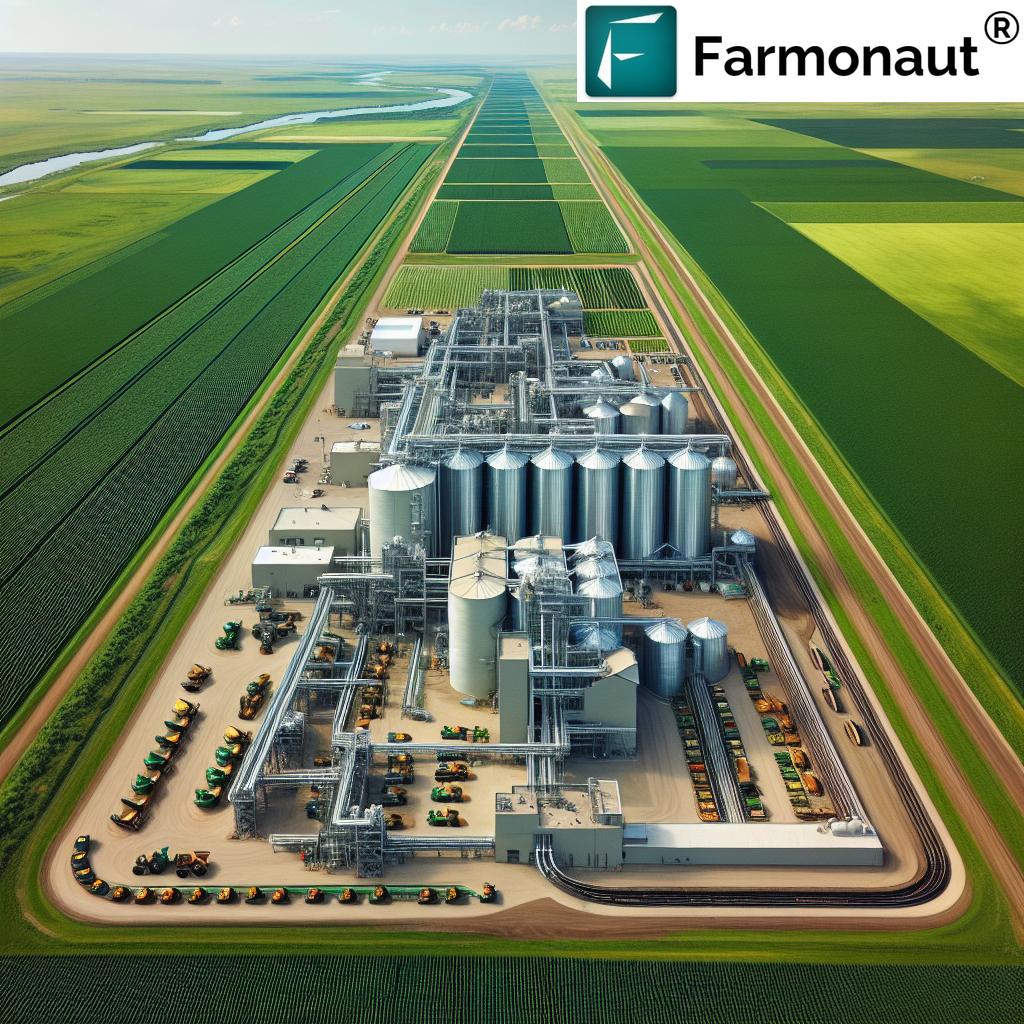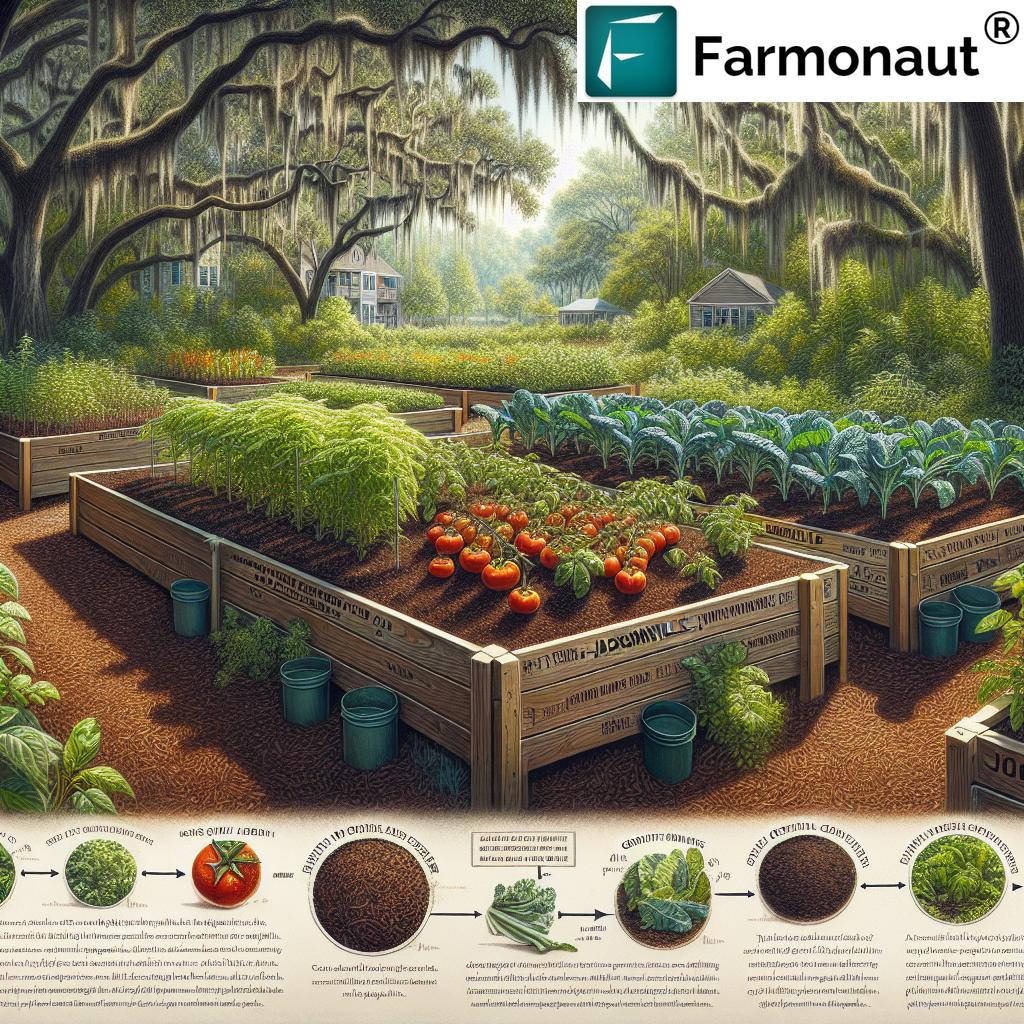National Agriculture Policy Wisconsin: 2025 Key Changes
“In 2025, Wisconsin aims to increase sustainable farm acreage by 30% under new national agriculture policy reforms.”
Table of Contents
- Summary: National Agriculture Policy in Wisconsin 2025
- Introduction: Context and Importance of National Agriculture Policy
- Key Changes in the New National Agriculture Policy Wisconsin 2025
- Policy Impact Summary Table
- Emphasizing Sustainability & Innovation in Wisconsin Agriculture
- Technologies and Innovation Shaping Agriculture in 2025
- Water and Soil Management in 2025: Policies, Practices, and Impact
- Supporting Small Farmers and Rural Communities
- Celebrating National Agriculture Day Wisconsin 2025
- Integration with National Forest Policy
- How Farmonaut’s Satellite Technology Empowers Sustainable Agriculture
- Frequently Asked Questions
- Conclusion: The Future of Wisconsin Agriculture
Summary: National Agriculture Policy in Wisconsin 2025
National Agriculture Policy Wisconsin: Shaping Sustainable Farming for 2025 and Beyond
Agriculture continues to be the backbone of Wisconsin’s economy and is deeply intertwined with the state’s cultural heritage. Renowned as “America’s Dairyland,” Wisconsin’s agricultural landscape is diverse and robust. With national agriculture policy updates in 2025, farmers, policymakers, and communities are set to experience significant changes emphasizing sustainability, technology innovation, climate resilience, and support for family farms. The newest reforms promote climate-smart agriculture, enhanced soil and water management, and expanded farmer support programs. Read on to understand the evolution, impacts, and actionable strategies enabled by these policy shifts.
Introduction: Context and Importance of National Agriculture Policy
National agriculture policy refers to a set of governmental strategies, regulations, and programs designed to sustain and regulate agricultural production, safeguard food security, and uphold environmental and economic viability for farmers. While most policies are debated and enacted at the federal level, states like Wisconsin adapt these frameworks to reflect unique agro-ecological conditions and local challenges.
Over recent years, the importance of national agriculture policy has grown, with increased attention on climate change, soil degradation, water quality, and the economic stability of rural communities. Wisconsin’s agricultural actors—dairy farmers, specialty crop producers, and rural residents—are directly influenced by these evolving national directives, shaping strategic actions and long-term planning across the state.
- Ensuring food security and affordability
- Improving environmental protection and sustainability
- Strengthening farmers’ economic viability
- Maintaining unique local agricultural heritage
The new national agricultural policy of 2025 reflects a pivotal step in addressing these overlapping goals and challenges.
Key Changes in the New National Agriculture Policy Wisconsin 2025
With the rollout of the new national agriculture policy Wisconsin in 2025, the following key focus areas are emphasized:
- Climate-Smart Agriculture: Fostering innovation in carbon sequestration, methane emission reduction, and adaptive water management to strengthen resilience against climate variability.
- Soil and Water Conservation: Updating policies to promote cover cropping, reduced tillage, nutrient management plans, and other best practices, aiming to curb nutrient runoff and soil erosion that threaten the Great Lakes and local water bodies.
- Farmer Support and Welfare Programs: Expanding subsidies, technical assistance, and market access to small and medium-sized farms, securing the backbone of Wisconsin’s agricultural identity.
- Innovation and Technology Adoption: Channeling funding into precision agriculture, biotech, digital agri-tools, and farm management platforms to increase productivity with a minimized environmental footprint.
- sustainable Dairy and Crop Operations: Encouraging the integration of methane digesters, renewable energy projects, advanced soil health techniques, and environmental stewardship initiatives.
These strategic policy reforms are not only propelling Wisconsin toward a more sustainable future but also setting a leading example for American agriculture.
“Over 60% of Wisconsin farmers will access climate-resilient resources due to 2025 policy changes.”
Policy Impact Summary Table: National Agriculture Policy Wisconsin 2025
| Policy Change | Estimated Implementation Year | Target Area | Estimated Impact | Sustainability Outcome |
|---|---|---|---|---|
| Expansion of Sustainable Farming Acreage | 2025-2026 | Land Management | Up to 30% increase in sustainable farm acreage by end of 2026 | Stronger ecosystem health and farm resilience |
| Climate-Resilient Resource Access for Farmers | 2025 | Farmer Support | Over 60% of farmers access new tools and resources | Enhanced adaptation to climate change |
| Mandatory Nutrient Management Plans | 2025 | Water Use & Runoff | Up to 20% reduction in fertilizer runoff by 2026 | Clean water, reduced eutrophication |
| Methane Digesters for Dairy | 2025-2027 | Emissions Reduction | Up to 25% reduction in methane emissions on participating farms | Lower greenhouse gas footprints |
| Federal Grants for Cover Cropping & Reduced Tillage | 2025-2028 | Soil Health | 30% increase in cover crops, up to 15% reduction in erosion | Improved soil biodiversity & stability |
| Farm Technology Incentives | 2025 | Innovation & Productivity | 15-20% more adoption of precision ag tools | More efficient and sustainable farming |
Emphasizing Sustainability & Innovation in Wisconsin Agriculture
The latest iterations of national agricultural policy in 2025 align explicitly with sustainability and climate resilience. The new national agriculture policy Wisconsin highlights several key strategies for integrating environmental conservation, economic viability, and community welfare into the state’s agricultural framework:
-
Climate-Smart Approaches:
- Adoption of carbon sequestration and methane emission reduction techniques on dairy and livestock farms.
- Promotion of water management innovations, adaptive irrigation scheduling, and drought-resistant crop varieties.
-
Soil and Water Health:
- Policies mandating cover cropping, reduced tillage, and science-based nutrient management plans.
- Expansion of cost-share programs for farmers implementing conservation practices.
-
Enhanced Support for Small Farms:
- Subsidies and grants prioritizing small and medium-sized farms.
- Technical assistance channels and market access for local producers and specialty crop growers.
-
Investment in Technology and Data:
- Support for advanced sensors, data-driven platforms, and satellite-based monitoring to optimize crop health, manage soil, and minimize environmental impact.
These progressive policies demonstrate the importance and evolution of national agriculture policy in Wisconsin, directly responding to both local and global environmental needs.
Technologies and Innovation Shaping Agriculture in 2025
Innovation is a driving force behind the successful adoption of the new national agriculture policy Wisconsin. In 2025, several technologies are fast becoming integral to Wisconsin agriculture:
- Precision Agriculture Tools: GPS, drone, and satellite-based technologies enable farmers to monitor crops, assess soil health and improve input efficiency—reducing resource footprints while boosting yields.
- AI & Data Analytics: Digital platforms harness artificial intelligence and big data to deliver real-time farming advice and predictive analytics for planting, harvesting, and resource management.
- Blockchain Traceability: Traceability solutions authenticate farm-to-table supply chains, increase transparency, and help ensure food security under new policy mandates.
- Environmental Impact Monitoring: Tools for tracking carbon footprints, water use, and nutrient runoff help farmers comply with sustainability standards and optimize conservation practices.
To empower agricultural businesses and family farms alike, web and mobile applications are now key to rural innovation. Farmers benefit from crop monitoring, weather updates, and strategic planning—all from their smartphones or computer screens.
Did you know? Farmonaut provides carbon footprinting tools to track and reduce emissions for agricultural and livestock operations — perfectly aligned with the 2025 policy’s emphasis on measurable sustainability progress.
Water and Soil Management in 2025: Policies, Practices, and Impact
Efficient water and soil management has become a cornerstone of the national agriculture policy Wisconsin 2025. Soil health and clean water are critical not just for farm productivity, but for the well-being of the state’s ecosystems, rural populations, and the protection of vital resources like the Great Lakes.
1. Soil Health and Erosion Reduction
- Cover cropping programs are promoted to improve soil organic matter, reduce erosion, and prevent nutrient leaching into water bodies.
- Reduced tillage policies lessen soil disruption, encouraging natural soil structure and biodiversity.
2. Nutrient Management and Runoff Prevention
- The state and federal policies 2025 require all commercial farms to implement nutrient management plans, aiming to reduce fertilizer runoff by at least 20% by 2026.
- Grants and education programs make it easier for farmers to access soil testing, precision application equipment, and record-keeping systems.
3. Water Conservation and Adaptive Management
- Advanced irrigation technology and real-time soil moisture monitoring help reduce excessive water use.
- State-level incentives support investments in adaptive water resource management—ensuring resilience during drought or flooding.
Farmers across Wisconsin are increasingly turning to satellite-driven analytics—including those large-scale farm management platforms provide—to monitor soil moisture, plant health, and irrigation needs. These tools accelerate the adoption of sustainable farming practices while safeguarding water and soil for future generations.
For developers and agri-tech enterprises, access to Farmonaut’s API and API Developer Docs allows seamless integration of satellite insights and environmental metrics—empowering new tools that help meet policy goals.
More crop loan and insurance providers are now requiring evidence-based reporting of soil and water management practices—a step encouraged and supported by the 2025 regulatory changes.
Supporting Small Farmers and Rural Communities
A standout component of the national agriculture policy Wisconsin is its direct focus on supporting small and medium-sized farms—which are essential to Wisconsin’s rural economy, heritage, and diversified production. In 2025, strong emphasis is placed on ensuring the economic viability and prosperity of these farms through:
- Subsidies for conservation practices, technology upgrades, and climate-resilient infrastructure.
- Technical assistance and education on policy compliance, best practices, and market trends—often delivered through partnerships with University of Wisconsin-Madison and agricultural extension offices.
- Access to digital platforms for monitoring and resource management—removing barriers to modern innovation even for the most traditional farmers.
- New traceability solutions help farmers stand out in local and regional markets by ensuring product authenticity and quality.
Through structured support programs and dedicated funding, national policy Wisconsin is building a resilient backbone for the rural economy to thrive now and in the decades ahead.
Celebrating National Agriculture Day Wisconsin 2025
National Agriculture Day Wisconsin, observed every year, celebrates the importance and enduring role of farmers in shaping the state’s success, health, and culture. In 2025, the day offers a special opportunity to showcase:
- Policy progress and public investment—events highlight new incentives, sustainable farm transformations, and community benefits driven by national agricultural policy.
- Educational campaigns—informing urban and rural residents about the latest agricultural practices, conservation efforts, and technology advancements.
- Showcasing innovation—from digital farm management to fleet management tools and advanced traceability tech, the day helps demystify the role of technology in boosting farm resilience.
- Bridging urban-rural divides—with farm tours, food festivals, and meet-the-farmer panels, National Agriculture Day Wisconsin fosters understanding and support for ongoing policy evolution.
Integration with National Forest Policy
Although national forest policy and national agricultural policy operate under separate mandates, their intersection in Wisconsin is undeniable—especially when it comes to land and watershed management. Forested regions shield farmland from excessive erosion, buffer water runoff, and support biodiversity crucial to crops and livestock.
- Forest conservation programs aim to strengthen sustainable land management, aligning with national agriculture policy Wisconsin goals on climate, soil health, and ecological resilience.
- Joint efforts between forestry and agriculture policies promote watershed protection, buffer zones, and the maintenance of wildlife corridors that benefit pollinators and natural pest control.
- Incentives for reforestation on marginal lands—such as the crop plantation, forest, and advisory tools available via digital platforms—help expand ecosystem services while supporting landowners.
By embracing an integrated approach, Wisconsin is strengthening its food, water, and environmental security for generations to come.
How Farmonaut’s Satellite Technology Empowers Sustainable Agriculture
We at Farmonaut recognize the urgent need for sustainable and data-driven agriculture—especially in states like Wisconsin, where agricultural, environmental, and community challenges converge. Our platform:
- Offers cost-effective satellite monitoring across diverse acreage, allowing farms to track crop health, soil variability, and resource management.
- Facilitates environmental impact monitoring such as carbon footprinting, water management, and compliance with nutrient runoff regulations.
- Enables efficiency in logistics and resource allocation — our fleet management solutions help reduce costs and environmental footprints for agricultural operations.
- Delivers transparency and trust throughout the supply chain with blockchain-based traceability.
- Accessible on all devices: Web, Android, iOS, and via full-featured API.
We deliver tools aligned with the new national agriculture policy Wisconsin by helping farms and businesses maximize sustainability, productivity, and compliance on every acre.
Frequently Asked Questions – National Agriculture Policy Wisconsin 2025
What are the main objectives of the new national agriculture policy Wisconsin in 2025?
The primary goals are to promote sustainable agricultural practices, advance climate resilience, support soil and water conservation, ensure the economic viability of small and medium farms, and drive the adoption of modern technology within Wisconsin’s diverse agricultural sector.
How does the policy support climate-smart agriculture?
It offers incentives for carbon sequestration, introduces stricter methane emissions requirements for dairy, funds adaptive irrigation and water management, and encourages the transition to renewable energy on farms.
What is the role of satellite technology in supporting policy goals?
Satellite and AI-driven analytics enable farmers to monitor field-level crop, soil, and water conditions in real time. This empowers data-driven decisions, enhances compliance with new policies, and optimizes inputs for better productivity and environmental outcomes.
Why is soil and water management such a strong focus for 2025?
Healthy soil and clean water are fundamental to long-term farm productivity and the state’s environmental health. New policy amendments improve erosion controls, reduce runoff, and help revive ecosystems impacted by intensive farming.
How does the new agriculture policy address forest and watershed management?
By integrating national forest policy and agriculture policy, Wisconsin’s strategies ensure forested lands function as critical buffers—improving water protection for crops and supporting biodiversity necessary for resilient agriculture.
How will small farms in Wisconsin benefit from these policy changes?
Specific funding, technical support, and access to cutting-edge technology ensure that smaller farms remain the backbone of the rural economy, able to adapt to climate, market, and regulatory changes in 2025 and beyond.
Conclusion: The Future of Wisconsin Agriculture
The national agriculture policy Wisconsin for 2025 marks a bold step toward sustainability, environmental stewardship, and economic growth across the state. By enacting forward-thinking regulations—backed by innovation and grassroots support—Wisconsin is setting the benchmark for climate-resilient, sustainable agriculture in America’s Dairyland and beyond.
- For farms: New policies mean tools, incentives, and education to empower sustainable practices without sacrificing productivity.
- For families and communities: Stronger rural economies, better food security, and enhanced environmental quality.
- For the ecosystem: Improved water quality, reduced greenhouse gas emissions, and revitalized soils.
We at Farmonaut look forward to supporting Wisconsin’s journey with affordable, scalable, and accessible satellite technology—helping farms, businesses, and policy implementers turn sustainability goals into on-the-ground realities for 2025 and beyond.













